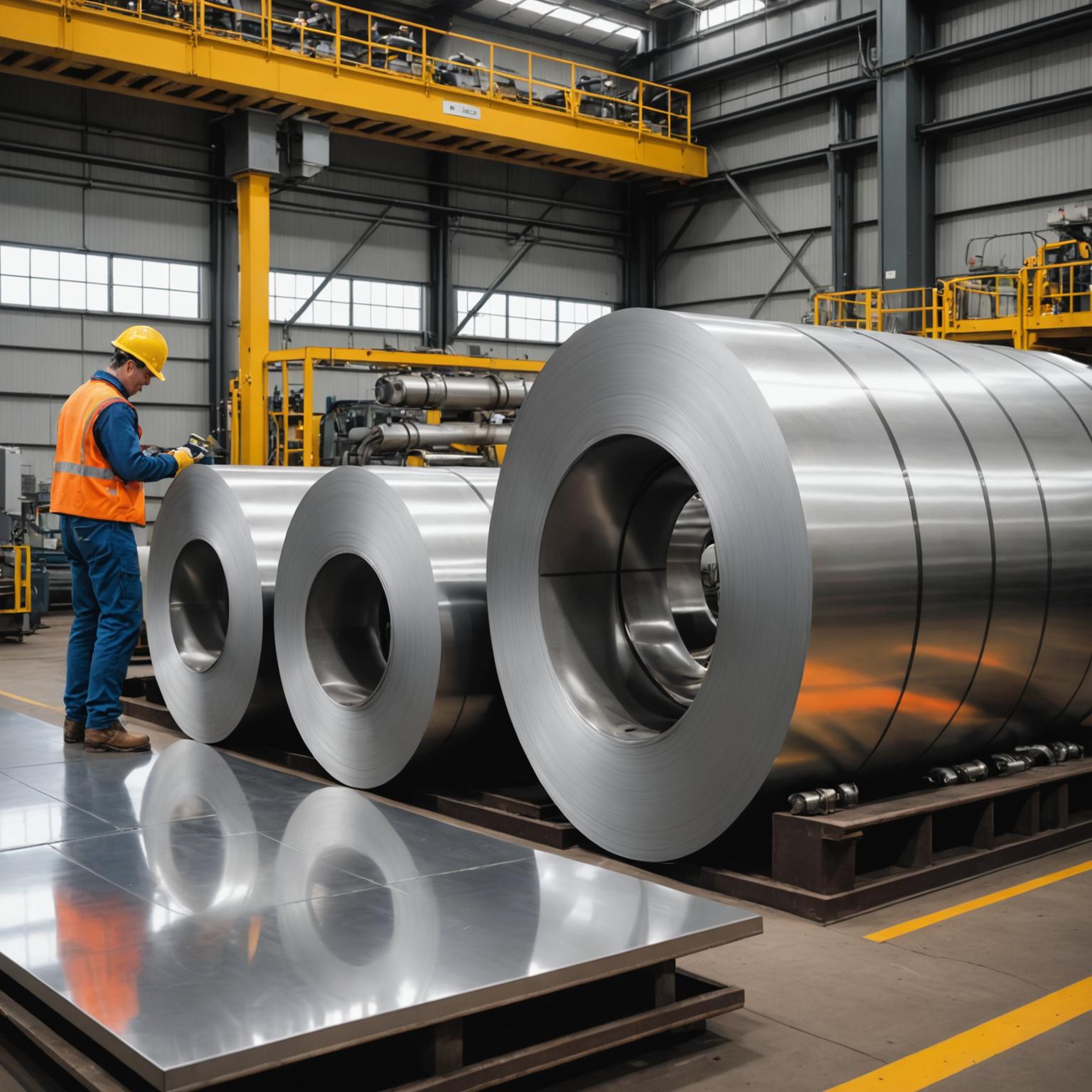In the world of modern manufacturing and design, material choice is paramount to the success, longevity, and aesthetic appeal of a final product. Among the vast array of options, the brushed stainless steel coil has emerged as a premier material, celebrated for its unique combination of sophisticated looks and robust performance. This guide aims to provide a comprehensive overview of this versatile material, covering its properties, applications, and the key considerations for selecting the right coil for your project, empowering you to make an informed decision for your manufacturing or architectural needs.
Understanding the Brushed Finish
So, what exactly sets a brushed stainless steel coil apart from other steel products? The distinction lies in its unique surface finish. Unlike a standard mill finish or a highly reflective polished surface, a brushed finish is created through a meticulous mechanical process. The surface of the stainless steel is abraded with a fine-bristle brush or a similar abrasive belt, which creates a pattern of very fine, unidirectional lines. This process results in a satin-like luster rather than a mirror-like shine. The beauty of this finish is that it beautifully diffuses light, reduces reflectivity and glare, and is exceptionally good at hiding fingerprints, smudges, and minor scratches. This makes it not only an aesthetic choice but also a practical one for high-touch surfaces and everyday applications.
The Inherent Advantages of Brushed Stainless Steel
The appeal of brushed stainless steel goes far beyond its surface. The base material itself, stainless steel, is an alloy renowned for its exceptional properties. Its primary advantage is superior corrosion resistance, thanks to the presence of chromium, which forms a passive, self-repairing oxide layer on the surface, protecting the steel from rust and environmental degradation. This inherent durability means products made from it are long-lasting, even in challenging environments. Furthermore, stainless steel is incredibly strong and resilient, maintaining its integrity under physical stress. It is also hygienic and easy to clean, a non-porous surface that resists the growth of bacteria and other pathogens, which is why it is a staple in commercial kitchens and medical facilities. When you combine these core benefits with the sophisticated brushed finish, you get a material that is truly the best of both worlds: elegant, durable, low-maintenance, and versatile.
A Guide to Common Applications
The unique combination of properties makes the brushed stainless steel coil a go-to material across a diverse range of industries. In the world of home and commercial appliances, it is the undisputed king. From refrigerators and dishwashers to ovens and microwaves, the brushed finish provides a modern, high-end look that is easy to keep clean. In architecture and construction, its use is widespread. It is specified for decorative and functional elements like wall panels, column covers, elevator interiors, door frames, and custom trim, where it lends a contemporary feel while standing up to public wear and tear. The automotive industry utilizes it for interior trim and accents, adding a touch of luxury and durability to vehicle cabins. Beyond these, it is also used in manufacturing electronic enclosures, commercial kitchen backsplashes, and even in artistic sculptures, demonstrating its remarkable adaptability.
How to Select the Right Coil for Your Project
Choosing the correct brushed stainless steel coil requires careful consideration of several key factors to ensure optimal performance and cost-effectiveness. The first step is selecting the appropriate grade of stainless steel. Grade 304 is the most common and is an excellent all-purpose choice for most indoor and general applications. However, if the product will be exposed to harsh conditions, such as coastal air with high salt content or corrosive chemicals, Grade 316, which contains molybdenum for enhanced corrosion resistance, is the superior choice. Next, consider the specifics of the finish itself. The standard #4 brushed finish is widely used, but other levels of coarseness are available to achieve different aesthetic effects. It is also crucial to specify the required dimensions, including the coil's thickness, width, and weight, to match your production line's capabilities. Ensure the supplier guarantees uniform thickness and tight tolerances, as this is critical for consistent results in fabrication processes like stamping, roll forming, or laser cutting. Finally, inquire about a protective film. A high-quality PVC or PE film applied to the brushed surface is essential for preventing scratches and damage during handling, fabrication, and installation, ensuring the final product is pristine.
Care and Maintenance for Lasting Beauty
While brushed stainless steel is remarkably durable and low-maintenance, following some simple care guidelines will keep it looking its best for years to come. For routine cleaning, a soft microfiber cloth dampened with warm water and a mild detergent is usually all that is needed. The most important rule is to always wipe and scrub in the direction of the visible grain lines. Wiping against the grain can alter the reflective properties and may even scratch the surface. For more stubborn spots like grease or fingerprints, specialized stainless steel cleaners can be used. Avoid using abrasive materials like steel wool, scouring powders, or harsh chemicals like bleach, as these can permanently damage the finish and compromise the steel's passive protective layer. By following these simple steps, you can easily maintain the elegant appearance of any product made from a brushed stainless steel coil.








